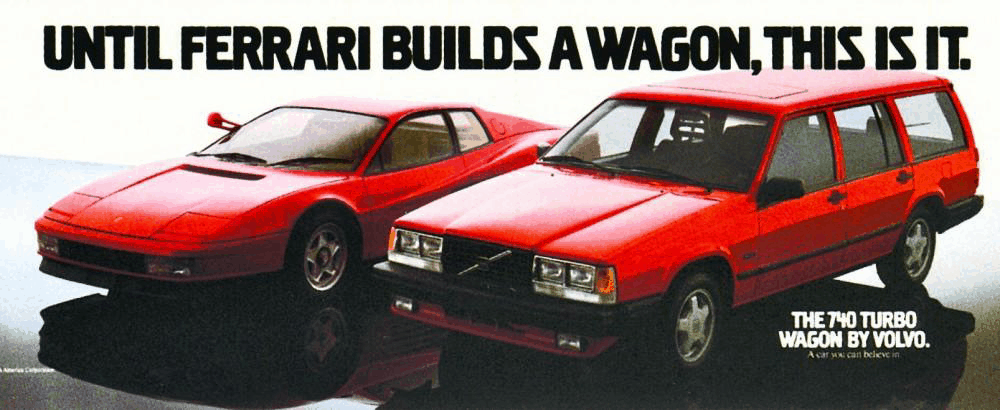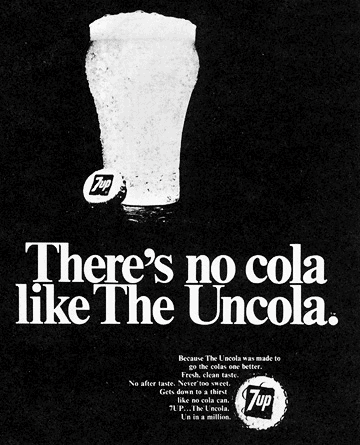Your category and value proposition define what your brand is. Position defines what your brand is in relation to all the other brands in your category. Positioning is typically expressed as an aspiration that defines the words and sentiments you would like your prospect to use in differentiating your brand from others in the category. It should frame your argument, making sense of all of your selling points. For instance, when SAS had established its value proposition for on-time performance and global coverage (although it lagged in price and other areas), itpositioned itself as the Businessman’s Airline.

| POSITION BASICS | |
|---|---|
| Objective | Highlights a common theme (red thread) that binds your total offer and helps your ideal prospect differentiate your brand from others in the category. |
| Question | Answers the prospect’s question “How do you compare to my other options?” |
| Result | Helps you compete on the short list for purchase. |
| International | You are positioned in relation to other options on the market and your ideal prospect’s perceptions of them. Therefore, strive for one position per target segment, which means your position should be assessed, at least, for each country your brand. |
| Top Tip | Since positioning defines how you wish your target to differentiate you from competitors, its success depends on how accurately you have defined your target and how well you monitor their perceptions of all brands in the category. |
We said you can only say one thing first. But what about the rest of your offer? Surely communicating your brand’s other attributes could help create a favorable brand bias. The position lets you do this in a highly compact fashion. The desired position should build off your value proposition to infer superior value across the wider spectrum of requirements held by the target. It should, therefore, preclude the need to detail each and every feature and benefit. For instance, if a chain of gas stations positioned itself as the gas station for traveling families, it would create the expectation of clean bathrooms with changing tables, microwaves for baby bottles, and safe, well-lit facilities, without necessarily having to spell all these things out.

A brand’s position is defined by its prospects and customers, not by its owners. Yet, ask a marketer what their brand’s position is and nine time out of ten times they will read you a line from their brand strategy. That may be where they would like their brand to be positioned, but in no way answers the question you asked. The only way for a marketer to know how their brand is positioned is to survey their target market. The rest is just wishful thinking.
Imagine the confusion that would ensue on a sailing journey if the navigator used the current location and the desired destination interchangeably. That’s what happens inside marketing organizations that state their positioning aspirations in place of their actual position. To help avoid this confusion, define these four dimensions for your brand and use them with your team:
- Reality: the objective truth about what the product or
company behind the brand is and is capable of. - Profile: how you portray that product or company brand to
the target market. - Perception: how the target market perceives/positions your
product or company brand. - Aspiration: how you would like the target to perceive/position
your product or company brand to provide a strategic
advantage.
If you want a formula for sustainable positioning, define and align the four elements above. The end game is this: What your brand is (reality), what you say it is (profile), which is how people perceive it (perception), which is how you were hoping they would perceive it (aspiration) in order to compete more effectively. This is Brand Nirvana, an ideal state that is never actually reached, but one that strong brands perpetually strive for.
The difference between desired position and value proposition can often seem academic since both help define your brand’s offer. Although there may be cases where the two are the same (i.e. the value proposition is used as the position), they address two different concerns prospects have as they take the first steps down the path to purchase.
Value Proposition vs. Position
| VALUE PROPOSITION | POSITION |
|---|---|
| What are you good at? Answers the prospect’s question “Why should I care about your brand?” | How are you different? Answers the prospect’s question “How do you compare to my other options?” |
| Specific: Focuses narrowly on one value where the brand delivers exceptionally well and that the brand actively supports. |
General: Focuses on the bigger picture of the competitive ecosystem in which your value proposition lives. Puts your value proposition in a broader context that is easy for your target to understand and believe. |
| Global: Created in response to core category needs shared across your target market world-wide. | Local: Created in response to perceptions target segments have about other options available in their specific market. |
| Fixed: Core needs change but not that quickly, so the value proposition has a shelf-life range from the mid- to longterm. | Fluid: Perceptions change with each change in the market so the position has a shelf-life range from the short to midterm. |
| Nurtured by Product Development: Value Proposition is something real to the extent that it can be developed, improved upon, and measured in some way. | Nurtured by Marketing Communication. Position is a construct that can be reinforced and clarified, but it is more of a theme than a tangible thing. |
| How: Helps the target market understand how the brand serves. | Who: Helps the target market understand who the brand serves. |
| Head: Value propositions tend to be (but are not always) based on a concrete benefit to be expected. | Heart: Positioning statements tend to be (but are not always) based on empathy and inclusion in a select group. |
Every brand that is considered by a prospect will be positioned by them. Your prospects will combine all their information, feelings, and perceptions about your brand to sum up the totality of your offer and differentiate it relative to other options in the category. That will be your position and it will weigh heavily in the final purchase decision. The only question is, to what degree do you influence that process? To do that, a clear statement of the desired position you want your brand to occupy in your target’s mind needs to be drafted, then reinforced through your communication every chance you get. Below are a few steps you can use to help you define a valid position for your brand.
These steps are very similar to the process used to determine your value proposition. And, like the value proposition, you will most likely find that your target’s perceptions will differ from country to country. Be sure to include the different major markets you serve when surveying competitors and interviewing the target.
6 steps to creating a differentiating position for your brand
❶Survey your competitors
Visit the sites of all main competitors for each of your major markets. Look at their messaging and try to reverse engineer what each one’s position is. Write down their position and make a note if you feel the position has or is likely to gain any traction in the market.
❷Develop a hypothesis
You don’t create positions so much as you anticipate and occupy them. Start by looking at the positions occupied by your competitors in each major market. Have they missed any? Are there any unclaimed positions within the category that would be relevant to both your value proposition and your target segment? Make a list of possible positions for each major market you serve and see how they fit. Arrive at a short list of two or three for each major market that are defendable and feel right for your brand. It’s fine if the position is the same in every market, but you should not set out to make it that way from the start. Brands are positioned in relation to your target’s beliefs and perceptions, along with the other options available to them. These are typically different from one country to the next, therefore, a brand’s position is often different from country to country.
❸Talk to your target
You should now have a list of several possible positions that highlight not only your value propositions, but also your entire brand offer. You also have a list of what you think are your competitors’ positions in each market. Time to put both to the test with a third party who can investigate your target to:
- Confirm the category and who prospects perceive as the major players in that category.
- Describe how prospects distinguish / position the various brands in their own words.
- Describe how prospects distinguish / position your brand in their own words.
- Arrive at a description prospects feel best distinguishes your brand.
- Assess and discuss the appeal of your list of potential positions.
- Assess and discuss the believability of your list of potential positions.
❹Define your position
The results of the target interviews should have provided insight into what positions are relevant to your target. Your own assessment should have indicated what areas you can excel in. Combine these to define your position in plain terms. Remember, this is a strategy statement, not a tagline or headline. Like other strategy statements, your desired position will never be seen by the outside world. Your priority is clarity and accuracy, so don’t try to make it fancy. To ensure a good fit with your value proposition, you can try to write your position as an extension of it, using the template below. However, if you find the template too restrictive, simply use in your own words.
For (your brand’s broad target market) who (statement of main problem you address) (your brand name) excels at (statement of main solution you provide) because (primary support). Like (three leading competitors), we (main point of parity). But unlike them, we (main point of differentiation). Therefore, in/for (specify market segment), we would argue that we are the only (position name) brand in the category.
❺Support your position
Next, for each market’s position, list all the proof you have that directly supports your position. Prioritize the points that your target in that market indicated would be most convincing. These will be used to communicate the position in a believable manner.
❻Communicate your position
Positions are built on communication. Brands communicate in thousands of different ways, from the advertising and packaging to customer service and pricing plans to the way corporate offices are decorated. Your position should form the backdrop against which all your communication takes place. It should define your tone and manner and be developed into a communication theme that frames all your communication and your relationship with the market. It should be reinforced with the way you communicate and interact with your online audience. It should also be reflected in the way you choose to profile your brand.

- Marlboro
A good example of the fluidity of a brand position is Philip Morris’s cigarette brand Marlboro. The cigarette was originally launched in 1924 with the value proposition of mildness, supported by a filter, which was a new innovation at the time. It was designed to make the smoke milder on the palate. This had much more appeal to women than to men. So Philip Morris positioned their mild, filtered cigarette as a niche brand for woman and reinforced this through advertising and packaging considered feminine at the time. They even colored the filter red so that lipstick marks would not show up. In the 1950’s, cigarettes were first linked with lung cancer. This cast filtered cigarettes in a whole new light because they were perceived as safer. Given the threat of cancer, many men were receptive to switching to filtered cigarettes but did not want to be perceived as smoking a woman’s cigarette. So, Philip Morris repositioned Marlboro as a very masculine brand. They didn’t change the cigarette, just redesigned the packaging and other brand communication. The new advertising campaign featured the iconic cowboy figure. After thirty years on the market as a woman’s cigarette, a change of position catapulted the brand from less than 1% of the US cigarette market to the fourth biggest selling brand in just twelve months.

- Volvo
Volvo decided to be best in class with regard to safety. That’s its value proposition globally. This has influenced product development as well as other things. When selling station wagons to people living in affluent suburbs of Boston, the brand built off its value proposition to position itself as a “premium family car.” That market had no shortage of premium import brands or family-oriented automobile brands. But, there were no premium family car brands. In Sweden, where the brand is far less exotic/premium, it still maintained its value proposition for safety, but used that as in indication of how well built the car was, allowing it to be positioned as a “durable family car.”

- 7-Up
Positioning can provide a powerful empathy magnet to attract new users and fuel loyalty. A good example of this is a classic positioning campaign that was run by the lemon-lime soda 7-Up. It’s a challenge to distinguish any brand in the crowded lemon-lime soda category against competitors like Spite, Shasta, Slice, Mountain Dew, Fanta, to say nothing of store and local brands. However, in America in the late 1960’s, there was a strong movement that was decidedly anti-establishment. In the world of soda, cola, and specifically Coke, was the establishment brand in the pin-striped suit. It was also the largest soft drink segment and 7-Up wanted to take some market share from it. So, in 1967, adapting to the spirit of the times,7-Up positioned itself as the anti-establishment soda, adopting the position as “the uncola.” The concept of the uncola was expressed with a range of advertising campaigns appealing to the nonconformist in everyone. It positioned the brand as the most daring and most in-tune with pop culture, both important attributes in the category. 7-Up even took Coke’s classic cola glass design and inverted it to create their own uncola glass.
Checklist: Positioning
- Is your desired position relevant to your target?
- Does your desired position clearly differentiate you from other brands in the category?
- Have you verified these assumptions with your target in all major markets?
- Does your position provide fertile ground for promotion and communication?
- Does your position help your best prospects self-identify?
- Is your desired position relevant to your brand?
- If it’s a company brand does the position make sense with the product brands?
- If it’s a product brand does it fit logically under the corporate brand umbrella?
- Have you investigated and adapted your position for each major target segment and market?
- Have you defined your desired position in plain terms that non-experts could understand?
- Have you made a plan to focus all of your brand communication around your position?
- Is your position clear and evident through the design of your website and other online assets?
- Is your position reflected in your content marketing and online networking?




